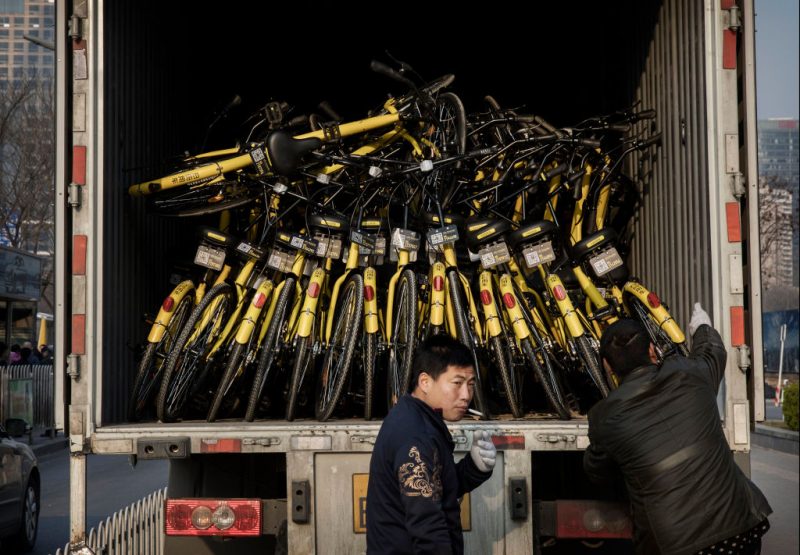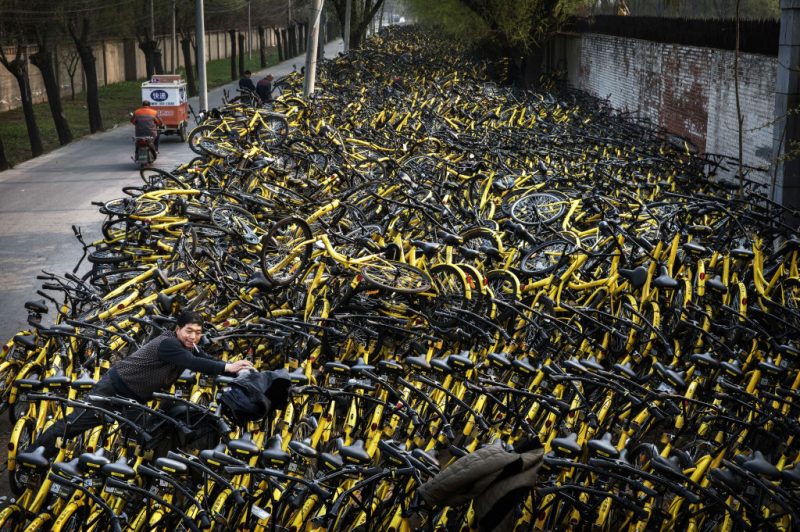In recent years, several dockless-bike startups have popped up in Chinese cities. Often billed as “Uber for bikes,” the companies allow users to unlock GPS-enabled bikes with their smartphones, and then park them anywhere when they’re done.
But too many of these startups have launched, and there’s not enough demand. As The Guardian notes, after three Chinese bike-share companies -Mobike, Ofo, and Bluegogo – went bankrupt in late 2017, many of the bikes were abandoned in lots in cities across China, including Beijing, Wuhan, and Xiamen.
These bike graveyards, pictured below, should serve as omens for Chinese cities that want to heavily invest in bikeshares:
Chinese cities have experienced a rapid rise in dockless bikes in recent years.

Riders are charged a few pennies per 30-minute ride, a very low price compared to similar bike-sharing programs in other countries. New York’s docked bikes, for example, cost $3 for a 30-minute ride.

To make sure the bikes would always be available, Chinese bike-sharing startups placed thousands of them in cities across the country.

But due largely to a lack of demand, several bike-sharing startups have gone bankrupt in China.

In an open letter last year following Bluegogo’s bankruptcy, the company’s CEO apologized for expanding too quickly, and admitted that he had been “filled with arrogance.”
Many of the bikes — casualties of the boom and bust of the country's bike-sharing industry — now lie abandoned in piles.

The declining industry raises questions about the future of bike sharing in China.

But not long ago, bikes were a common form of transportation in the country.

By the mid-1990s, China had up to 523 million bike owners. Bikes were especially popular in Beijing, where there were 72 bikes for every 100 people.

Source: CityLab
But as cars became a status symbol around the turn of the 21st century, China started instituting anti-biking policies. Guangzhou repurposed bike lanes for cars, and Dalian declared itself a "non-bicycle city."

Bike use plummeted, and personal-vehicle use — and CO2 levels — rose.

In an effort to make bikes popular again, around 30 bike-sharing startups launched in the past few years — to varying success.

Since the bikes can be dropped off anywhere, riders sometimes leave them in front yards, parks, shops, and other inconvenient place. The photo below shows a pile of bikes some 10 feet high in a Shenzhen plaza.

In March 2017, China mandated that companies must hire one maintenance worker for every 200 bikes. That meant the industry needed to add as many as 15,000 employees, which likely hurt their bottom lines.

The bike graveyards now serve as reminders of a declining industry that grew too quickly.


